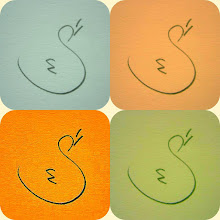'Lost' music instrument recreated
By Pallab Ghosh Science Correspondent, BBC News |
The Lituus is a straight horn measuring 2.4m with a flared end |
New software has enabled researchers to recreate a long forgotten musical instrument called the Lituus.
The 2.4m (8ft) long trumpet-like instrument was played in Ancient Rome but fell out of use some 300 years ago.
Bach's motet (a choral musical composition) "O Jesu Christ, meins lebens licht" was one of the last pieces of music written for the Lituus.
Now, for the first time, this 18th Century composition has been played as it should have been heard.
Researchers from the Engineering and Physical Sciences Research Council (EPSRC) and the University of Edinburgh collaborated on the study.
Performed by the Schola Cantorum Basiliensis (SCB) the Lituus produced a piercing trumpet-like sound interleaving with the vocals.
Until now, no one had a clear idea of what this instrument looked or sounded like.
But researchers at Edinburgh University developed a system that enabled them to design the Lituus from the best guesses of its shape and range of notes.
The result was a 2.4m (8ft) -long thin straight horn, with a flared bell at the end.
Hard to play
It is an unwieldy instrument with a limited tonal range that is hard to play. But played well, it gives Johann Sebastian Bach's motet a haunting feel that couldn't be reproduced by modern instruments.
The software was originally developed by a PhD student Dr Alistair Braden to improve the design of modern brass instruments.
But Dr Braden and his supervisor Professor Murray Campbell, were approached by a Swiss-based music conservatoire specialising in early music, the Schola Cantorum Basiliensis, to help them recreate the Lituus - even though no one alive today has heard, played or even seen a picture of this forgotten instrument.
SCB gave the Edinburgh team their expert thoughts on what the Lituus may have been like in terms of the notes it produced, its tonal quality and how it might have been played.
They also provided cross-section diagrams of instruments they believed to be similar to the Lituus.
"The software used this data to design an elegant, usable instrument with the required acoustic and tonal qualities," says Professor Campbell.
"The key was to ensure that the design we generated would not only sound right but look right as well."
He added: "Crucially, the final design produced by the software could have been made by a manufacturer in Bach's time without too much difficulty."
SCB has now used Edinburgh's designs to build two identical examples of the long-lost instrument.
Both were used in an experimental performance of "O Jesu Christ, meins lebens licht" in Switzerland earlier this year.
Written by Bach in the 1730s, it is thought that this is now the only piece of music in existence that specifies the use of the Lituus - and has almost certainly not been performed using this instrument since Bach's time.
"Sophisticated computer modelling software has a huge role to play in the way we make music in the future," comments Professor Campbell.
The software also opens up the possibility that brass instruments could be customised more closely to the needs of individual players in the future - catering more closely for the differing needs of jazz, classical and other players all over the world.
▓ 資料來源:http://news.bbc.co.uk/2/hi/science/nature/8075223.stm (2009/6/1)






沒有留言:
張貼留言